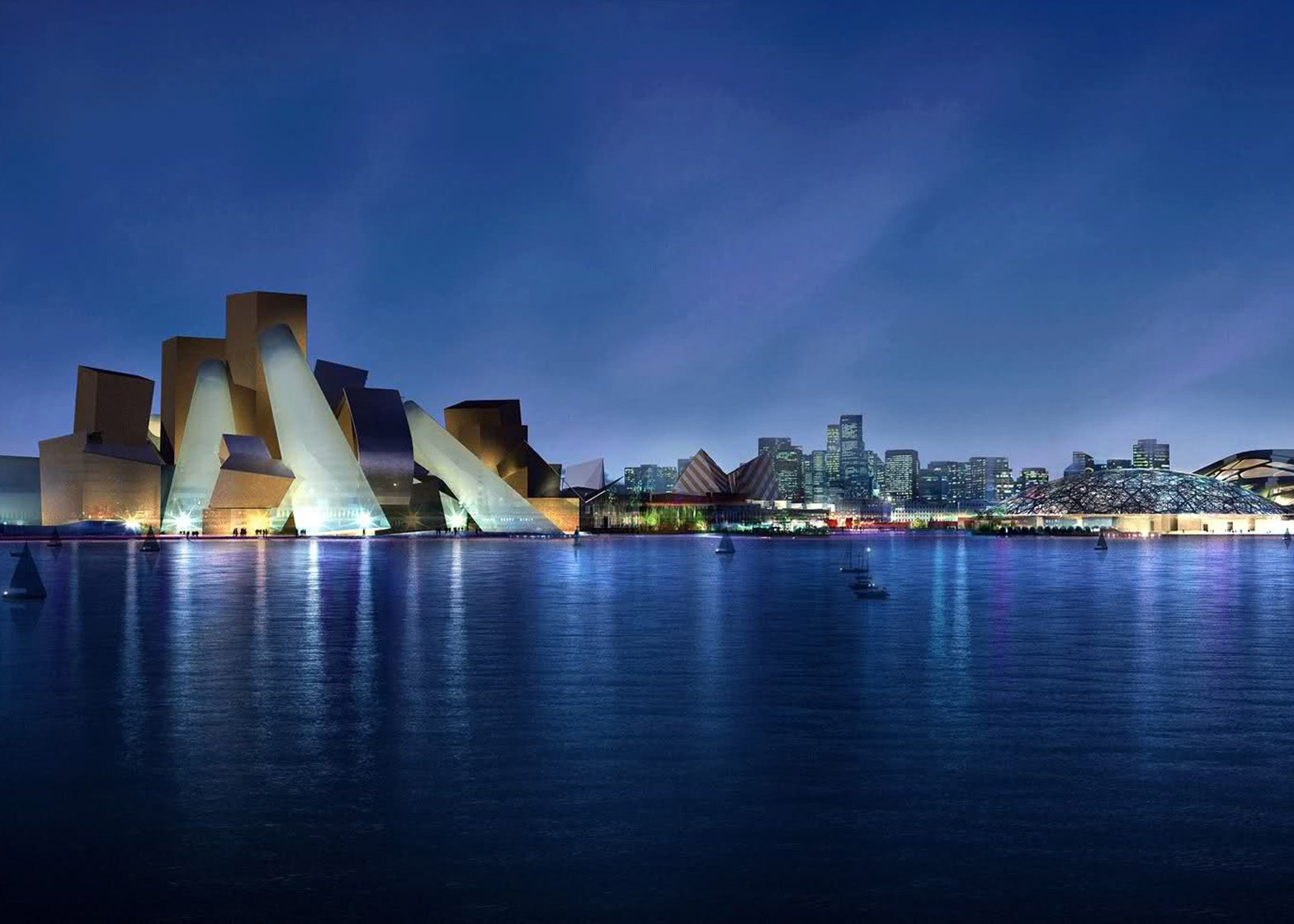The Guggenheim Foundation has admitted that work has still not started on its new Abu Dhabi museum by architect Frank Gehry.
No construction contract has yet been awarded for the £530 million Guggenheim Abu Dhabi, which was unveiled in a fanfare of publicity nine years ago, and which was intended to help establish the emirate city as a major cultural destination.
Without a contractor, neither the museum nor the authorities involved will give an expected opening date.
"The museum in Abu Dhabi is not yet under construction," museum publicist Molly Stewart told Dezeen. Nor further comment was given.
Work on other landmark projects on Saadiyat Island in the Gulf state has also been delayed. But while Jean Nouvel's Louvre art gallery is finally nearing completion, the Gehry-designed Guggenheim has made no progress since 2011, when the 1,400 concrete piles were poured.
According to the Tourism Development Investment Corporation (TDIC) – the government authority responsible for building the cultural institutions on Saadiyat Island – a timetable for the project will be revealed once a contractor is in place.
Dezeen received no response to a request for when that might be.
"Preparatory structural work has been completed for Guggenheim Abu Dhabi," a TDIC spokesperson told Dezeen, referring to the works four years ago.
"Once the main construction tender is awarded, further details on the project's timeline will be communicated," she said.
Since the project was originally proposed, the country's economic position has shifted due to a dramatic drop in oil prices. The political threat from Islamist extremists and a growing need for local employment could also be having an effect on developments, according to UK newspaper the Financial Times.
With a projected cost of £18 billion, the Saadiyat Island complex is expected to eventually boast a large roster of cultural facilities by star architects, including a British Museum spinoff by Foster + Partners, a performing arts centre by Zaha Hadid and a maritime museum by Tadao Ando.
The Louvre and Guggenheim were both proposed as part of the first phase of development.
The Louvre – the first overseas branch of the historic Paris gallery – was designed by French architect Nouvel with an 180-metre-wide domed roof, punctured with irregular openings to allow thin beams of light to filter through.
California-based architect Frank Gehry meanwhile proposed a similar design to his other building for the Guggenheim Foundation, the Guggenheim Bilbao. The 42,000-square-metre facility is envisioned as clusters of galleries in varying shapes and sizes.
Both projects were hit with initial delays due to the "immense magnitude" of the work, reported the FT. After that, the date for the Louvre was pushed back to 2015, while the Guggenheim opening was set for 2017.
Nearly five years on, the Louvre is nearly ready to open. TDIC chairman Ali Majed Al Mansoori said he expects construction to complete in mid-2016, and has already several conducted tours of the structure with foreign ministers.
"Construction of the museum is in its final stages and we are looking forward to a handover of the building taking place mid-2016," he said in statement in December 2015.
The construction contract for the Louvre was awarded to an Arabtec-led joint venture between Constructora San Jose and Oger Abu Dhabi in 2013.
The Guggenheim and Louvre are among the growing number of major cultural institutions expanding to new locations, including London's V&A and New York's MoMA.
The Guggenheim Museum – based in the Frank Lloyd Wright-designed building in New York – opened its first outpost in Bilbao in 1997 and plans to open a museum in Helsinki. The Louvre has one other gallery besides its Paris home – the SANAA-designed building in Lens, northern France.

